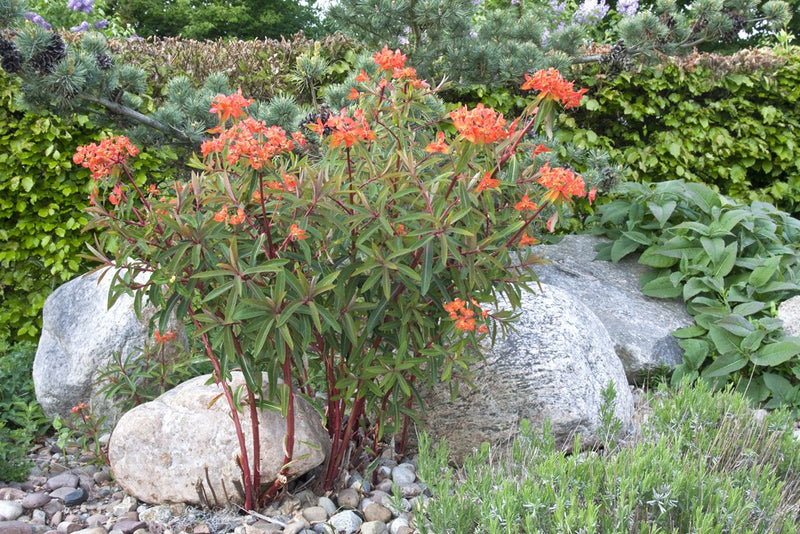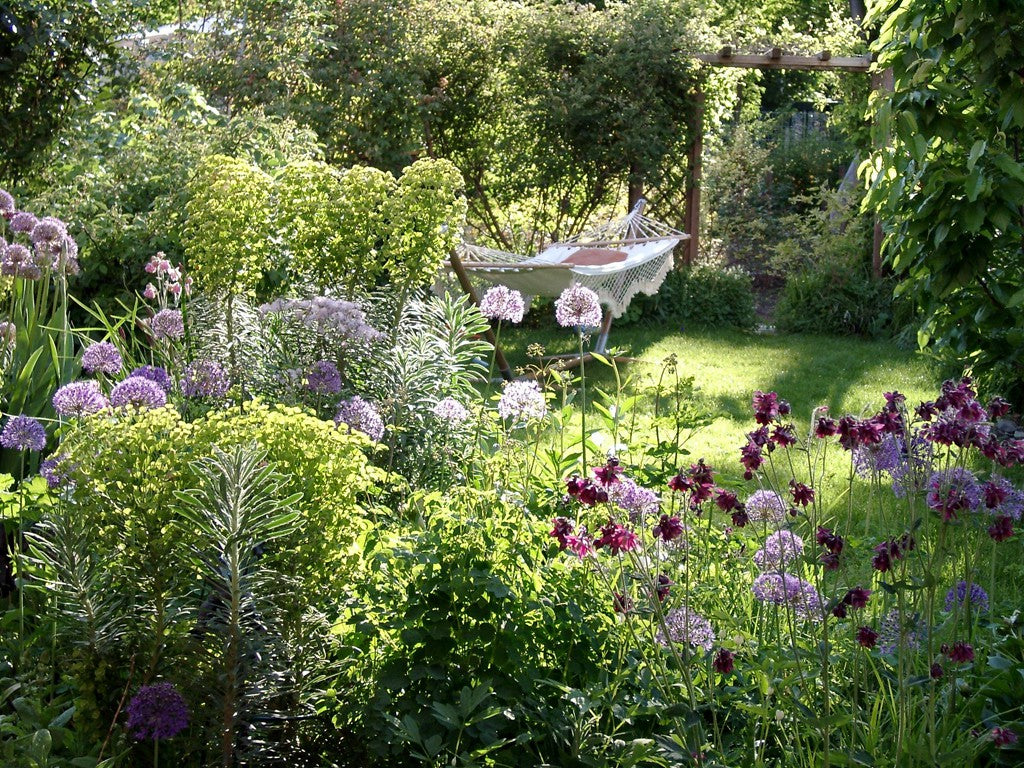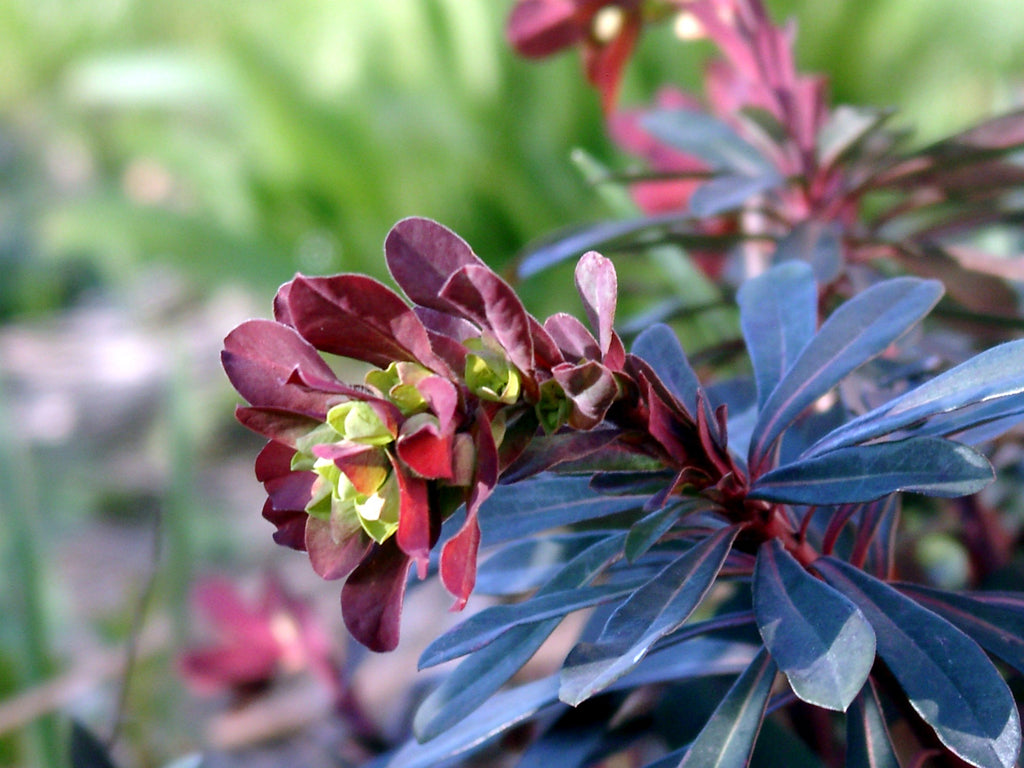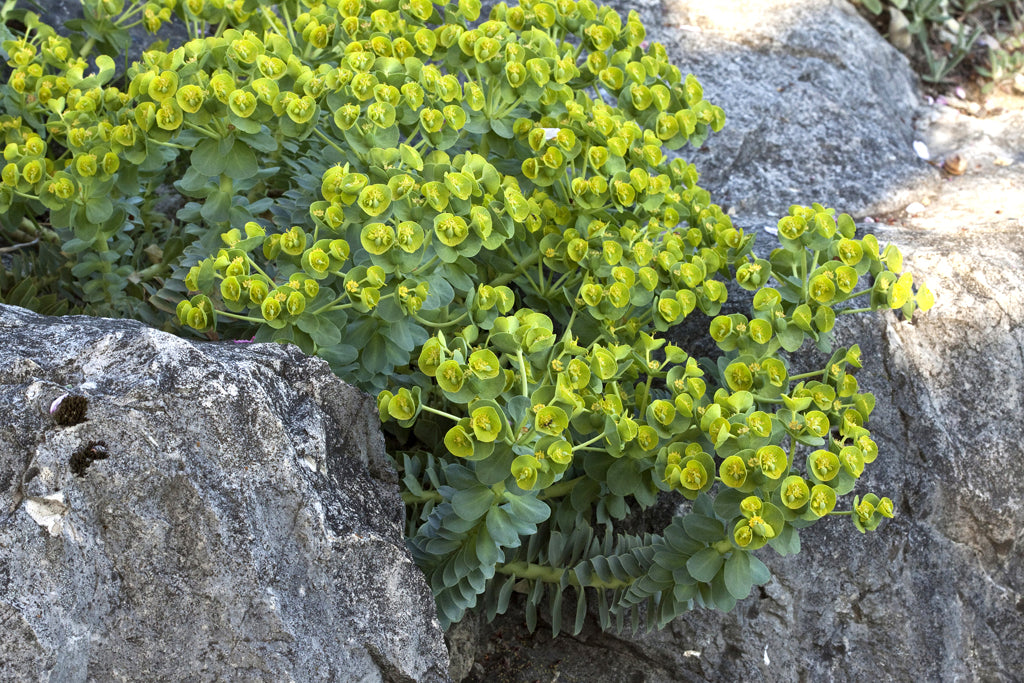Spurge – Variety for the garden
Euphorbia – Spurge was the Perennial of the Year 2013. With this campaign, the Association of German Perennial Gardeners (BdS) aimed to draw attention to particularly interesting perennials. The genus Euphorbia, with over 2,000 species worldwide, is incomparably diverse: Spurge plants offer a multitude of varieties for gardens in our latitudes.




Fantastic flowerbed designs
Many people are addicted to Euphorbias, says perennial gardener Klaus-Peter Manig from Uebigau. "They collect the plants because their diverse appearance is extremely fascinating." There are varieties that are magnificent and imposing, growing over a meter tall, while others are small and delicate; you have to look at them more closely. Many captivate with their perfect leaf structures, others with their flowers or bract colors. Some are a real asset in the autumn with their intense coloring. Some species are evergreen and thus bring important structure to winter gardens. Their real strength, Manig believes, is their ability to mediate between a wide variety of plants, thereby showcasing them even better. Moreover, a suitable Euphorbia can be found for almost every garden location. The Association of German Perennial Gardeners, which selected the plant, sees many reasons to put this genus in the spotlight in 2013.
To flowers or not to flowers? – That is the question!
One strength of all Euphorbias is their long flowering period. "However, the term 'flower' is botanically incorrect for Euphorbias," explains Manig, "because the flowers themselves, the so-called cyathia, are inconspicuous and fade quickly. Spectacular colors are provided by the bracts and involucral leaves surrounding the actual inflorescence." For weeks, sometimes months, they display a greenish-yellow, some fiery orange or red. These bracts serve as "attractors" for pollinating insects. The foliage of many varieties is also particularly decorative, often in gray-blue, intense green, or reddish colors. In some species, the effect is further enhanced by intense autumn color. These advantages, along with the ability to combine Euphorbias excellently with colorful perennials, thus bringing order and tranquility to borders, beds, and open spaces, make the plant so extremely versatile in the garden, says Manig.
The sun worshippers among the Euphorbias
Euphorbias occur in a wide variety of natural locations. In the garden, too, you can find the right plant for every situation. "It's important to choose the right plant for the right location; then you'll have long-lasting plantings," explains Manig. The bizarre-looking cylindrical spurge (Euphorbia myrsinites) thrives in a rock garden or gravel bed in a sunny location with well-drained soil. Its gray, cylindrical shoots, covered in hard, prickly leaves, grow 25-30 cm long. The drier and hotter the climate, the more pronounced the silvery-blue leaf clusters with their yellow-green flowers at the tips appear. The prolific native cypress spurge (Euphorbia cyparissias) and the steppe spurge (Euphorbia seguieriana ssp. niciciana) are also suitable for dry, sunny locations. The spurge boasts a seemingly endless flowering period, stretching from July to October, and fine, grayish foliage. Its bushy, spherical, overhanging growth is an eye-catcher both in the sunny foreground of a flower bed and in a pot. Combined with Perovskia, Centranthus, and white-leaved Cerastium, it creates harmonious, long-lasting garden images.
Euphorbia species also for partially shaded and moist locations
"For partially shaded locations with moist soil, the native evergreen almond spurge (Euphorbia amygdaloides) is just the thing," says Manig. The red-leaved variety 'Purpurea' captivates with its greenish-yellow blossoms in spring and is perfect for shade and spring gardens in combination with Epimedium, Hosta, and Luzula sylvatica. Growing to a height of 60 cm, the plant's red leaves add a pop of color to the perennial border well into winter. The foliage of the 'Blackbird' variety is even darker than that of 'Purpurea'. "To survive the winter well, the almond spurge should be placed in a well-drained location protected from the winter sun," advises the perennial expert. The marsh spurge (Euphorbia palustris) even grows in moist soils. The native plant grows to about one meter tall, has willow-like leaves and a long flowering period in May-June, and is suitable for both pond edges and perennial borders.
Imposing Mediterranean giant
There are also true giants among the spurge family. "The Mediterranean spurge (Euphorbia characias ssp. wulfenii) is particularly impressive," enthuses the perennial gardener. This imposing large perennial stretches its thick, evergreen stems up to 150 cm into the sky. The yellow-green flower spikes appear from April to June. The plant is particularly reminiscent of holidays in warm, southern climes. "It can be established in our garden," Manig knows, "but it should then be in a sheltered location." Unfortunately, it is not completely hardy in harsh climates. Very well-drained soil is essential. To develop its full beauty, this Euphorbia species needs sufficient nutrients. The spurge giant is also very suitable as an evergreen, impressive plant in a pot. There are now even smaller varieties and cultivars with partially variegated leaves, such as 'Emmer Green', which grows to 100 cm tall and has white-edged leaves.

Splash of color in the perennial bed
One particularly beautiful spurge is the deciduous sweet spurge (Euphorbis dulcis 'Chamaeleon') with its red leaves. In spring, green shimmers over the red, then turns to greenish-brown, above which the yellow dots of the flowers stand out from May to July. In autumn, the leaves turn an intense reddish-brown to orange. Self-seeding, the 30 to 50 cm tall plant lasts a very long time in the garden. With its matte foliage and beautiful hemispherical habit, it looks wonderful with reddish-brown heucheras or orange tulips. The Himalayan spurge (Euphorbia griffithi 'Fireglow') is also a colorful display. With bright orange-red bracts in May and June and spectacular yellow-red autumn color, it is an eye-catcher in any garden. The perennial grows 60-100 cm tall and should be protected from severe frost with a covering of leaves in winter.
TEXT: (GMH/BdS)









































































































